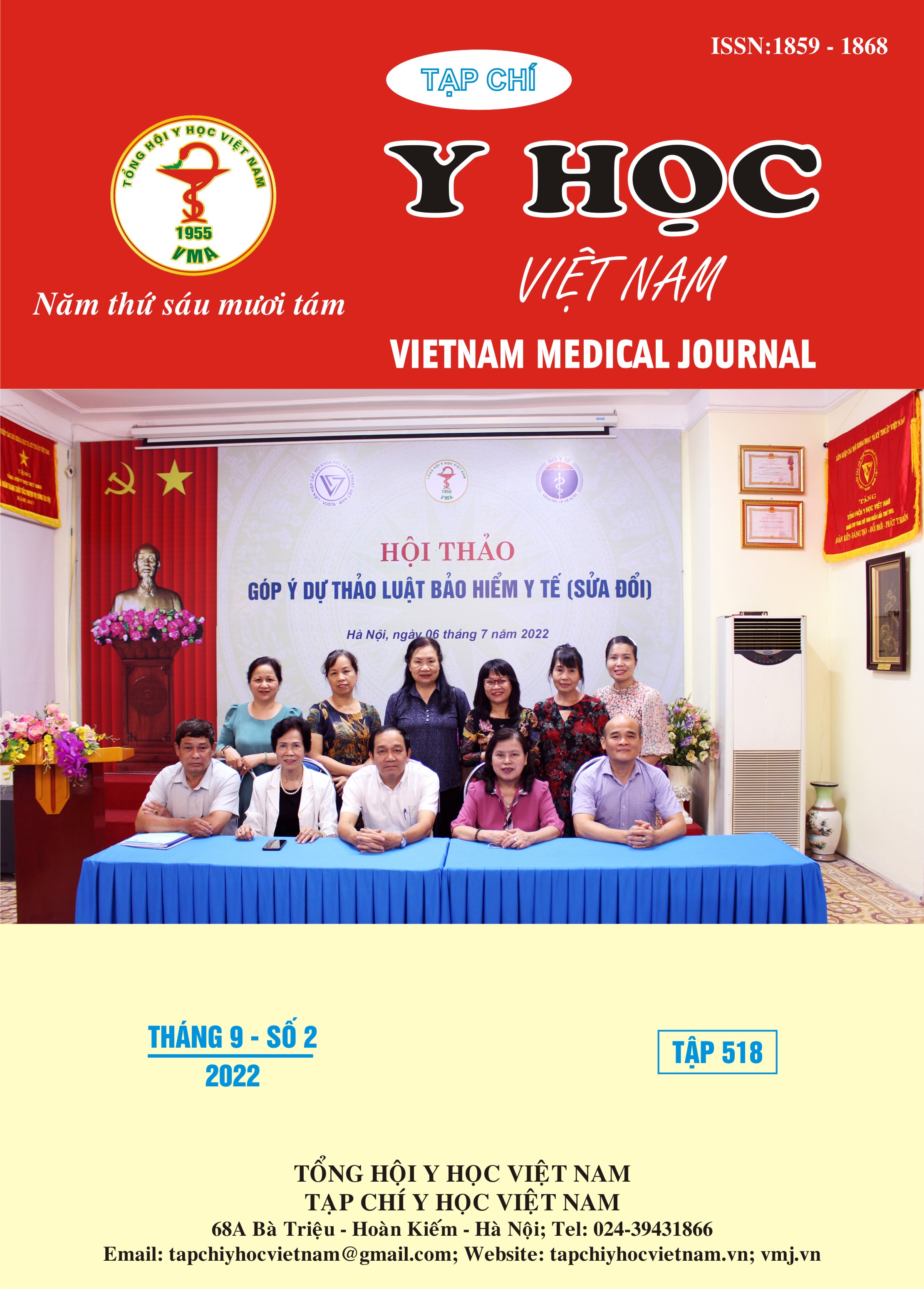THE PROGRESS OF SCHOLEIN - HENOCH PURPURA IN CHILDREN AT THE VIETNAM NATIONAL CHILDREN'S HOSPITAL
Main Article Content
Abstract
Henoch - Schönlein purpura (HSP) - also known as IgA vasculitis, is the most common vasculitis in children. These studies describe the HSP according to its clinical morphology, as well as assessment of progress of the disease according to new diagnostic criteria are not common. Objectives: To describe the progress of clinical morphology of HSP in children among 3 months. Methods: 84 first-time diagnosed children with HSP were hospitalized at the Viet Nam National Children's Hospital from July 2021 to June 2022. This was a cross-sectional and longitudinal study. Results: The mean age was 6.56 ± 2.61 years old. The most common clinical form of HSP at hospital admission was the combination form without renal involvement 49%, followed by the combination with renal involvement 27%. After 3 months, 70% of patients were recovered and 18% of patients had renal involvement, the recurrence rate was 9.52% and there was 6% changed to another clinical form. There was no correlation between the concentration of protein/creatinine urine at the hospital admition and the renal involvement aftrer 3 months of treatment. Conclusion: The overall outcome of HSP in chidren is good. To follow-up the concetration of protein in urine is necessary in order to identify the renal involvement.
Article Details
Keywords
Henoch – Schönlein purpura, clinical morphology, progress
References
2. Piram M, Mahr A. Epidemiology of immunoglobulin A vasculitis (Henoch–Schönlein): current state of knowledge. Current Opinion in Rheumatology. 2013;25(2):171-178. doi:10.1097/BOR.0b013e32835d8e2a
3. Trapani S, Micheli A, Grisolia F, et al. Henoch Schonlein Purpura in Childhood: Epidemiological and Clinical Analysis of 150 Cases Over a 5-year Period and Review of Literature. Seminars in Arthritis and Rheumatism. 2005;35(3):143-153. doi:10.1016/j.semarthrit.2005.08.007
4. Peru H, Soylemezoglu O, Bakkaloglu SA, et al. Henoch Schonlein purpura in childhood: clinical analysis of 254 cases over a 3-year period. Clin Rheumatol. 2008;27(9):1087-1092. doi:10.1007/s10067-008-0868-2
5. Ozen S, Pistorio A, Iusan SM, et al. EULAR/PRINTO/PRES criteria for Henoch-Schonlein purpura, childhood polyarteritis nodosa, childhood Wegener granulomatosis and childhood Takayasu arteritis: Ankara 2008. Part II: Final classification criteria. Annals of the Rheumatic Diseases. 2010;69(5):798-806. doi:10.1136/ard.2009.116657
6. Đỗ Thị Thảo, Nguyễn Thị Diệu Thúy. Đặc điểm dịch tễ học lâm sàng bệnh Schonlein - Henoch ở trẻ em tại bệnh viện Nhi Trung ương. Trường Đại học Y Hà Nội. 2017;112:26-34.
7. Chen P, Zhu X, Ren P, Wang Y, Sun R, Wei D. Henoch Schonlein Purpura in children: clinical analysis of 120 cases. Af Hlth Sci. 2013;13(1):94-99. doi:10.4314/ahs.v13i1.26
8. Calvo-Río V, Hernández JL, Ortiz-Sanjuán F, et al. Relapses in patients with Henoch-Schönlein purpura: Analysis of 417 patients from a single center. Medicine (Baltimore). 2016;95(28):e4217. doi:10.1097/MD.0000000000004217


